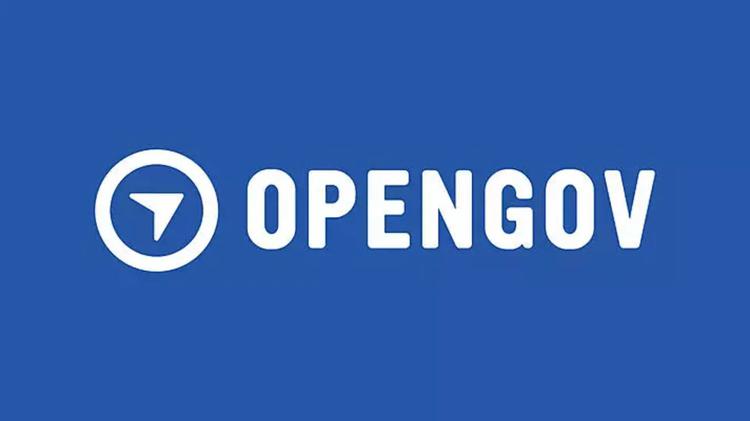How to Seamlessly Integrate CityDesk.AI's Chatbot into an OpenGov Site: A Step-by-Step Guide
In today's digital-first world, municipalities and public sector entities are under increasing pressure to provide fast, accessible, and efficient communication channels for their citizens. CityDesk.AI is an advanced AI-powered chatbot designed specifically for municipalities, offering a user-friendly, real-time engagement tool. For governments using OpenGov's platform, integrating the CityDesk.AI chatbot is a straightforward process, thanks to its self-contained JavaScript file that includes all styling, functionality, and backend integration.
This guide details how to easily add the CityDesk.AI chatbot to your OpenGov site, streamlining citizen engagement while enhancing service delivery.
Why Integrate CityDesk.AI into Your OpenGov Website?
Adding the CityDesk.AI chatbot to your OpenGov site brings a host of benefits:
Streamlined Communication: Automate responses to frequently asked questions, freeing up staff time and resources.
Enhanced User Experience: Provide 24/7 access to information and services, enabling citizens to get answers when they need them.
Built for Government: CityDesk.AI is designed with compliance and security in mind, ensuring your integration meets regulatory requirements.
Step 1: Obtain the CityDesk.AI JavaScript File
Once you sign up for CityDesk.AI, you'll receive a JavaScript file or code snippet that contains the entire chatbot. This script is self-contained, meaning it includes:
Custom styling
Interactive functionality
Integration with backend AI services for generating responses
Step 2: Log in to Your OpenGov Admin Dashboard
To start the integration process, log in to your OpenGov website’s admin dashboard. OpenGov allows administrators to customize pages and add external scripts through its platform.
Navigate to the Content Management section, where you can manage website templates, pages, or HTML widgets.
Step 3: Add the Chatbot Code to Your OpenGov Site
There are two main approaches to embedding the chatbot into your OpenGov site: page-specific HTML integration or site-wide implementation through your templates.
Page-Specific Embedding:
Choose the web page where you want the chatbot to appear (e.g., the homepage, service request pages, or contact page).
Use the HTML editor or code block to paste the CityDesk.AI JavaScript code. This can usually be done by adding a custom HTML section or widget.
Site-Wide Embedding (Template Integration):
For consistent visibility of the chatbot across the entire site, add the JavaScript to your global template or footer.
In OpenGov’s admin panel, locate the template editor and paste the JavaScript code just before the closing
</body>tag.
Example code snippet to embed:
<script src="https://yourdomain.com/path/to/citydesk-ai.js"></script>
This script ensures that the chatbot will be loaded dynamically on every page where it is embedded, providing consistent access to citizens.
Step 4: Customize the Chatbot’s Appearance and Behavior (Optional)
Although the CityDesk.AI chatbot is functional out of the box, it can be customized to fit your specific requirements. Depending on your version of the chatbot, customization options may include:
Positioning the chatbot widget (e.g., bottom-right or bottom-left of the screen).
Defining chatbot responses tailored to local government services like tax payments, permit requests, or public meeting schedules.
Connecting the chatbot to additional municipal services or databases for enhanced functionality.
These configurations can often be managed through CityDesk.AI’s admin interface or API, enabling you to tailor the user experience to your citizens' needs.
Step 5: Test the Integration
After embedding the chatbot code, it's critical to test its functionality to ensure that it works smoothly across your OpenGov website. Testing steps include:
Cross-browser Testing: Verify that the chatbot operates correctly in popular web browsers such as Chrome, Firefox, Safari, and Edge.
Mobile Responsiveness: Ensure the chatbot adjusts to different screen sizes, providing a user-friendly experience on mobile devices and tablets.
Interaction Testing: Simulate common citizen queries and check that the chatbot provides accurate responses. This ensures the AI is properly integrated with your services and data sources.
Step 6: Monitor Chatbot Performance and Optimize
After successful integration, continuously monitor the chatbot’s performance to maximize its effectiveness. CityDesk.AI typically includes analytics features that provide valuable insights, such as:
Interaction Metrics: Track the types of questions citizens are asking and how they engage with the chatbot.
Response Efficiency: Review how well the chatbot answers inquiries and identify any areas for improvement.
Customization Opportunities: Use the analytics to fine-tune responses and adjust configurations to better serve your community’s needs.
By leveraging these insights, you can continuously improve the chatbot's performance and better meet your citizens' expectations.
Final Thoughts
Integrating CityDesk.AI into your OpenGov site enables municipalities to provide more efficient, AI-powered communication and service delivery. The chatbot helps streamline citizen interactions, provide real-time information, and automate common inquiries, allowing your team to focus on more complex tasks.
Following these steps, OpenGov users can easily integrate the CityDesk.AI chatbot into their websites, creating a modern, responsive service channel for their communities. As municipalities continue to adopt digital transformation solutions, AI-driven chatbots like CityDesk.AI are becoming indispensable tools for optimizing public service delivery and engagement.
By integrating CityDesk.AI with your OpenGov platform, your organization can significantly improve citizen engagement and operational efficiency, while also providing a modernized user experience that meets the expectations of today’s digital citizens.
